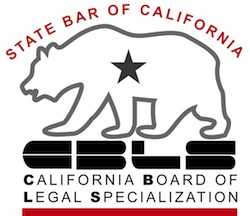Business debt can bleed over into an entrepreneur’s personal assets. Hearing me say that, my client was dumbfounded. He was aghast that the generous equity in the home he and his wife owned was at risk when his corporate business folded. That was not because the shareholder is liable for the corporation’s debts. A properly […]
The Bankruptcy Problem Your Lawyer Can’t Fix
Everyone considering bankruptcy faces the question of what to tell their lawyer. Sometimes it’s a problem you don’t want to face yourself, or a debt your spouse doesn’t know about. The problem even the best bankruptcy lawyer can’t fix is the one you hide. Maybe it’s a claim you hope to bring after the bankruptcy. You’re […]
Skip Bankruptcy’s Means Test
The couple was despondent when another bankruptcy attorney told them that, despite $100,000 in old taxes, they couldn’t file Chapter 7. This fine fellow told them that the means test showed they had $3000 of disposable income per month. A Chapter 7 would be an abuse of bankruptcy under the law. Only Chapter 13 was […]
Debt Can Kill You If You Let It
There is a straight-line connection between debt and health: the stress of too much debt erodes physical health. The single largest source of stress in the US, at least before COVID-19, is money. Or lack of money. Other potent sources of stress include work, the economy, family and relationships. As a bankrutpcy lawyer, I can’t […]
DYI Bankruptcy Did Him In
For a layman filing a bankruptcy without a lawyer, he didn’t do too badly. He got credit counseling and filed the certificate. He completed the schedules fairly well. He even filed a pro se adversary proceeding to enforce the automatic stay when the foreclosure on a multi million dollar property went forward despite the bankruptcy. […]
10 Must-Know Things About Money Judgments
What does it mean when a money judgment is entered against you in a lawsuit? It’s not the end of the world, but it has serious financial repercussions. Here are 10 critical things you need to know about legal judgments. More What to do when you’ve been sued Fighting a wage garnishment Protecting your assets […]
7 Keys To Keeping Your House: Chapter 13 After You File
You filed filed Chapter 13 bankruptcy to keep your house and stop the foreclosure. You’ve protected your home, for the moment. Bankruptcy gets you a sheltered legal environment to address the problems with your mortgage. You heave a sigh of relief. But the fight to keep your house isn’t over, just because there’s a stay. […]
Don’t Let Your Bank Pick Your Pocket
The right of your bank to take your money when you aren’t looking stops at your credit card. Your bank may be entitled by common law to setoff what it owes you from what you owe it on the garden variety debt. But the federal Fair Credit Billing Act forbids a bank who has issued you a […]
Debt Actually Makes You Stupid
It’s easy to tell ourselves that getting into debt was stupid. Maybe, maybe not. Lots of debt happens without making bad decisions. Think of medical bills. Natural disasters. Divorce. But regardless of how you got in debt, there’s more bad news. Just being in debt makes you stupid. Stupid, as in, your IQ goes down […]
Who Cares About Your Spending Before Bankruptcy?
Worried about using credit cards before bankruptcy? Afraid of prejudicing your bankruptcy case by spending money before you file? Do you imagine some authority figure deciding that your financial behavior in the run up to bankrupcy bars you from relief? Take a deep breath. That’s not how it works. Let’s look at what matters and […]
- « Previous Page
- 1
- 2
- 3
- 4
- 5
- …
- 71
- Next Page »









